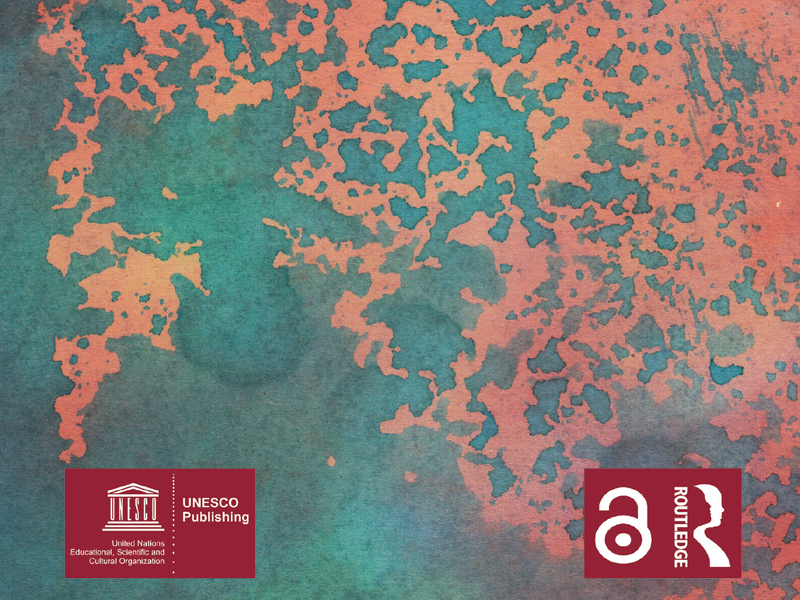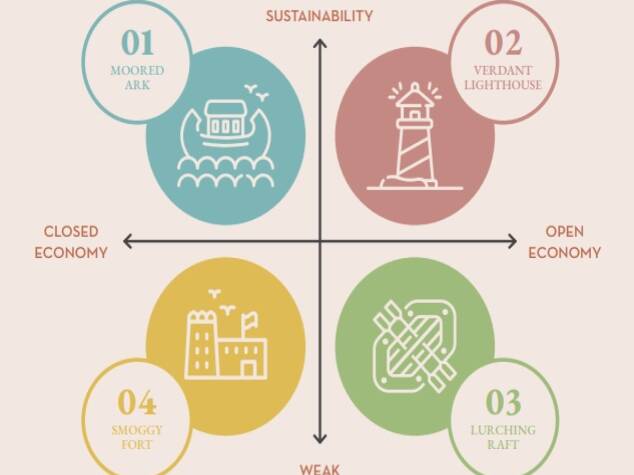Many of the megatrends presented here, are found in the European Commission’s Megatrends Hub or other sources of recognised standing in procedures of Horizon Scanning. In addition, the simple method of the Futures Wheel, which can be used by public institutions as a first step in understanding the interconnection of upcoming changes and challenges, is set out in Annex I (Glenn, 2009) .
Two of these megatrends are simultaneously cited by many analysts as forces of change and refer to globalisation and the evolution of technology. Together they shape economies, societies and our lifestyle. In both developed and emerging economies, the slowdown in growth, the increasing inequalities and the deepening fractures in the social contract are creating upheavals and instability. However, it is perhaps the right time to mobilise all the new means available to humanity. Empowering and unleashing human capabilities could help face the challenges ahead and create a new socio-economic system that provides trust and opportunities for all. The important themes that occurred from the analysis of these megatrends can be summarised in the five points below:
ΤΟ1
The analysis identified global challenges such as climate change, potential financial crises, pandemics and implications of exponential technological developments. These challenges (eg.Covid19) -often not directly dependent on the human factor- will bring about extensive pressure and significant impact on countries and societies. The effects of climate change and environmental degradation are likely to affect food and water availability for poor countries, intensify migration, cause new health challenges and contribute to biodiversity loss. New technologies will emerge and will spread faster, disrupting the economy, the labour market, society itself and the citizen’s position in it. The continuing effects of climate change exacerbate inequalities and intensify the phenomenon of climate migration globally, creating constantly new problems in both the countries of origin and of destination. The above challenges, if combined, will in turn affect other parameters, with implications that are extremely difficult to assess.
Τ02
Facing the above common challenges is getting more difficult, partially due to the growing fragmentation of societies, states and the international system. Surprisingly, despite the fact that the world is more interconnected than ever before through globalisation, this interconnectivity may have contributed to the fragmentation and radicalization of people and communities. The hyperconnected information environment, the intensification of urbanisation and the interdependence of economies signify that most aspects of the daily lives of the citizens, no matter where in the world they live, are closely interrelated. “Internet of Things” connected devices reached 23.14 billion in 2018 and are expected to reach 75.44 billion by 2025 and possibly many trillions by 2040, all of which will be monitored in real time. This connectivity will enable the creation of new skills and facilitations and will also help raise the standard of living. However, this will create tensions at all levels from societies that are being divided as they differ in core values and goals, to regimes that use digital repression to control their citizens. As these hyper-connections deepen and spread, it is likely that in parallel social, cultural, or political preferences’ fragmentation will increase.
In addition, people may come together and share information with others with similar views, reinforcing specific beliefs and a sense of owning the truth. Meanwhile, globalisation is likely to continue to prevail but also to change form as economic production networks shift and diversify. Overall, these forces depict a world that is inextricably linked, but at the same time fragmented.
Τ03
The extent of common challenges and the emerging effects of fragmentation go beyond the ability of the existing systems and structures to respond and create imbalances. There is a growing mismatch at all levels between challenges and needs on the one hand, and the systems and organisations that aim to address them, on the other. The international system -including organisations, alliances, and rules- does not seem ready to meet the increasing global challenges populations are facing. The COVID-19 pandemic has been a prime example of coordination failures in handling health crises on a global level as well as of mismatches among existing pandemic response mechanisms, funding levels and future health challenges. Α constantly increasing gap between what citizens demand and what governments and the private sector can offer is likely to be created and established within states and societies. All over the world without exception, more and more people are taking to the streets to express their dissatisfaction with the inability of governments to meet a wide range of needs and expectations. As a result of these imbalances, the existing systems -from institutions and rules to forms of governance- seem to have reached the limits of their potential, while there appears to be an inability of those in charge at all levels to agree on new governance models.
Τ04
A key consequence of this great imbalance is the creation of a greater conflict within the communities, the states and the international community, including the growing tensions and competitions.Relations between societies and governments will be under constant pressure while states will strive to meet the growing demands of citizens. As a result, domestic politics is likely to be more unstable and questioned. No country, ideology or system of government seems to meet the demands of the citizens. On a global level, the geopolitical environment will become more competitive mainly because of the China challenge to the United States and its allies. The major powers have engaged in a rally to set the rules of the new direction. This competition takes place in all sectors and topics, from communications, information flow and media to trade and technological innovation.
Τ05
Finally, the need for adaptability will be imperative, making it an advantage for all. Climate change, for example, will force almost all states and societies to adapt to a warmer planet. Some measures are cheap and simple, such as reforesting or storing rainwater. Others are more complicated, such as constructing huge sea walls or relocating large populations. Demographic change will also require broader adaptation efforts. Countries with a high percentage of senior population, such as China, Japan and South Korea, as well as Europe, will face constraints on economic growth should they not implement adaptive strategies, such as increasing the use of automation and adopting a flexible immigration policy. Technology can be key to gaining advantages through adaptation. For example, countries that are able to take advantage of the productivity growth resulting from artificial intelligence (AI) will “seize” economic opportunities, which could allow governments to provide more services, reduce national debt, finance part of the cost of the ageing population and even help some emerging countries avoid the “middle-income trap” (loss of strategic advantages). The benefits of technology will be unequally distributed across and among states and, more broadly, the adaptation process is likely to reveal and exacerbate new inequalities. The most effective states are probably the ones that can build social consensus and trust in the collective action for adaptation and at the same time leverage the relevant know-how, the capabilities and the relations between the public and the private sector.
Global Megatrends
Megatrends are defined as long-term driving forces that are observable now and will most likely have a global impact. They can help you identify probable and preferable futures. Use them to reflect on the future in a systemic way ! The term Megatrend was first mentioned by John Naisbitt in his book “Megatrends” (1982), where a Megatrend is defined as a long-term process of transformation with a global extend, wide scope and significant impact.
The three dimensions of megatrends

Time
Observable over decades, Megatrends can be projected with a high degree of probability at least 15 years into the future.

Reach
Megatrends affect all regions and stakeholders, including governments, individuals, and businesses.

Impact
Megatrends fundamentally transform policies, society, and the economy
The secondary research conducted, initially revealed about twenty megatrends and trends, often cited in published academic papers, foresight books, reputable strategic studies, in the media, and especially in The Megatrends Hub of the JRC . Seven of these Megatrends, with a significant impact on the European and global economy, society and policies, have been selected.
Read all the study here.







